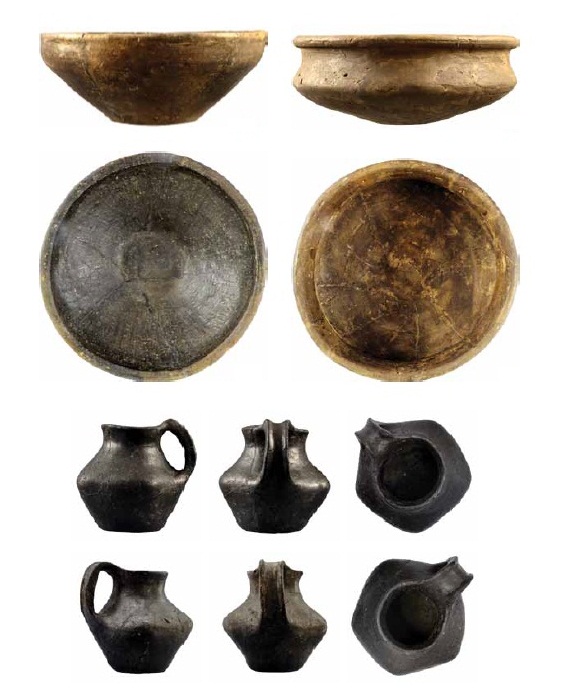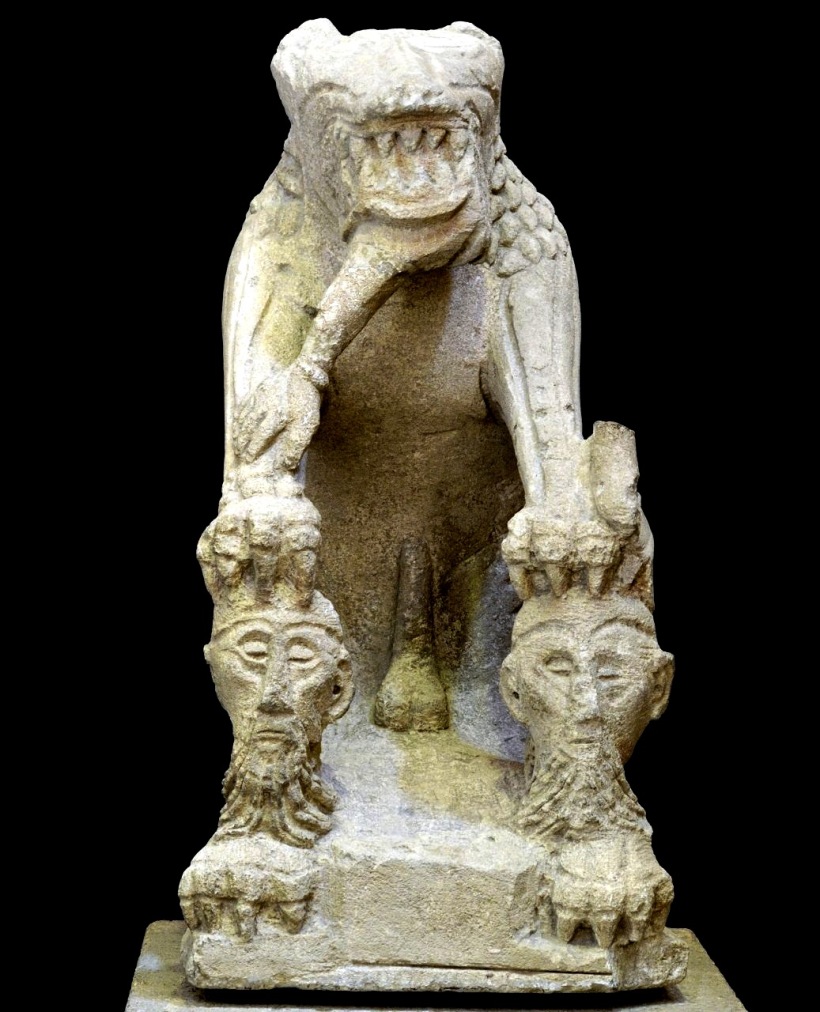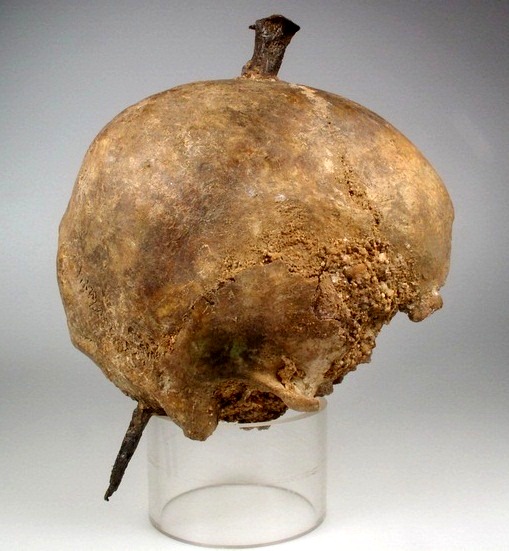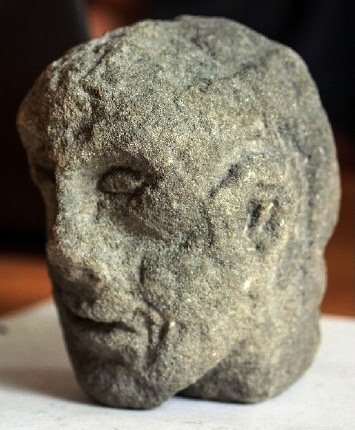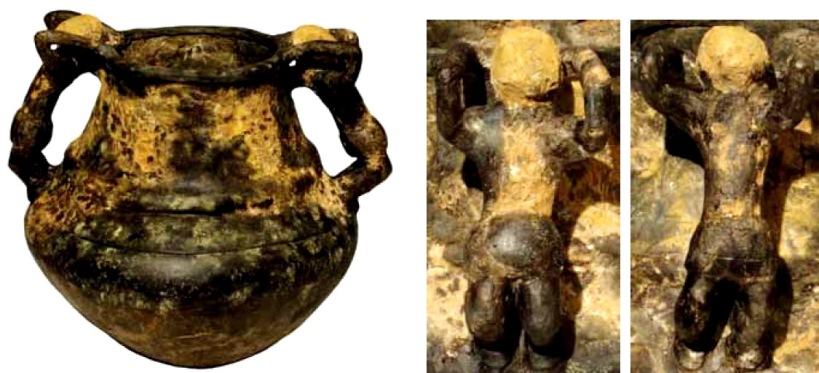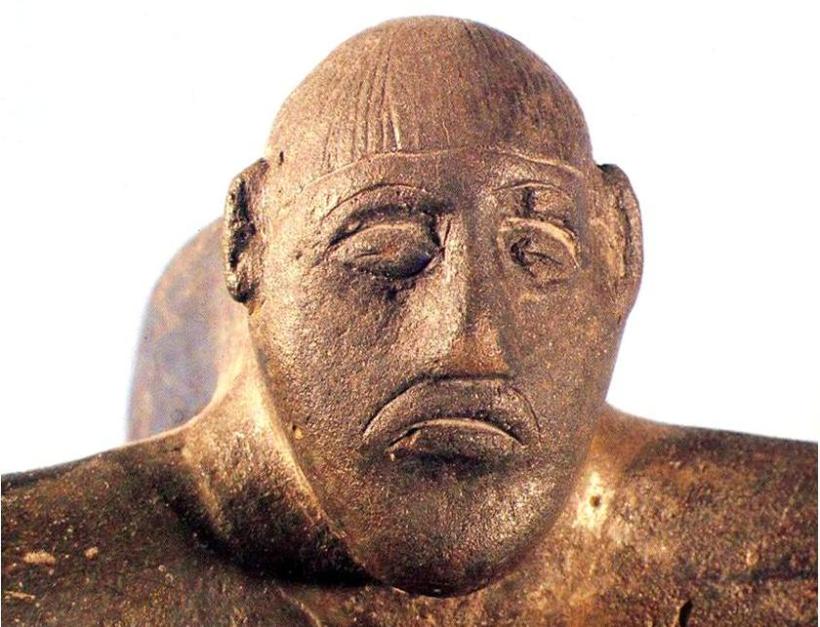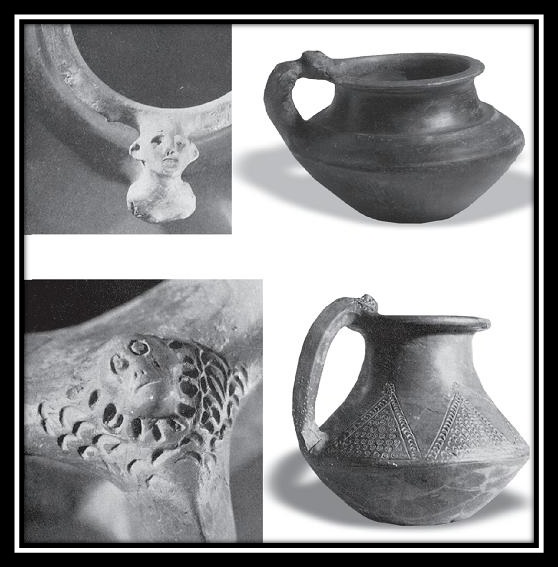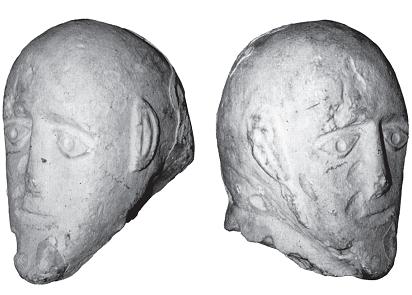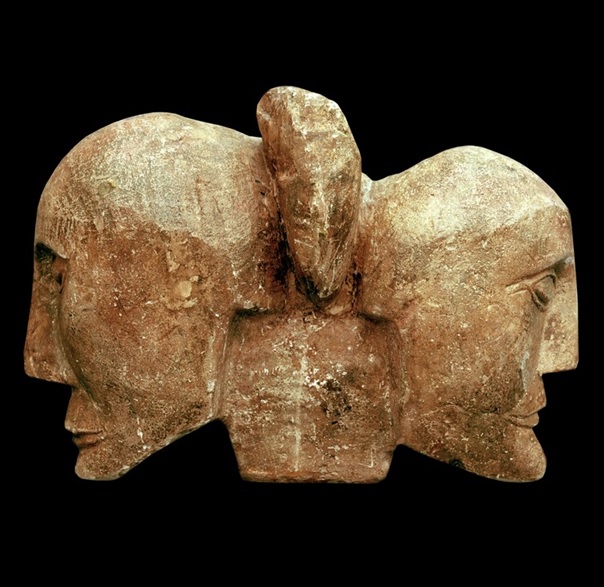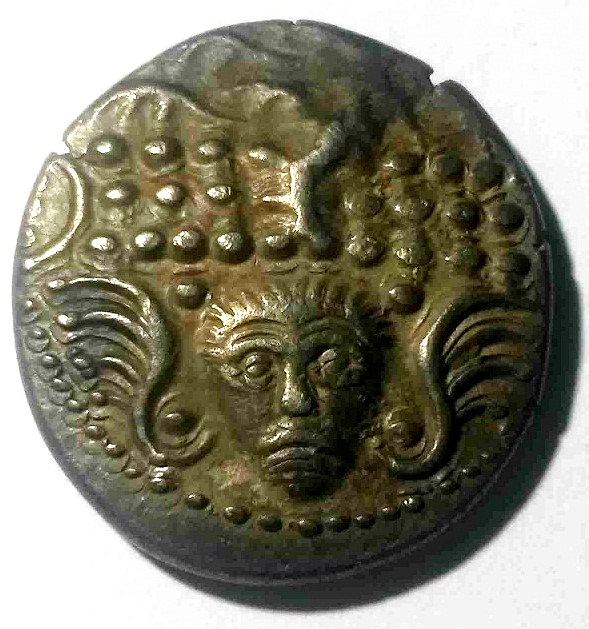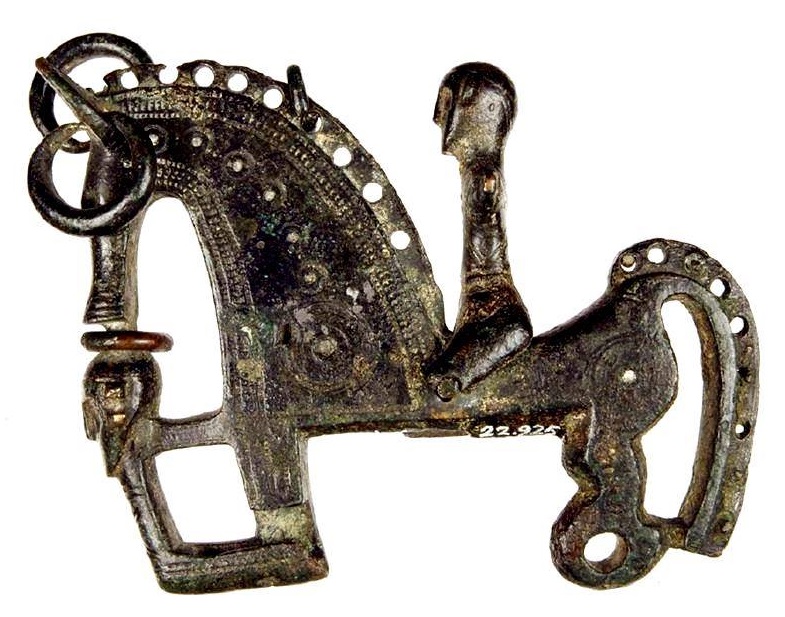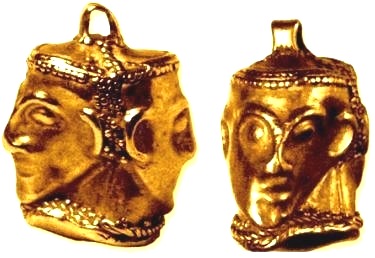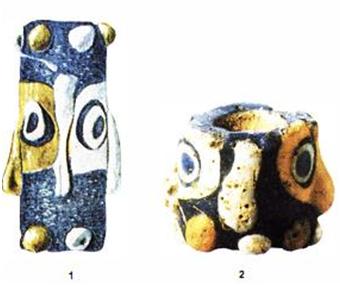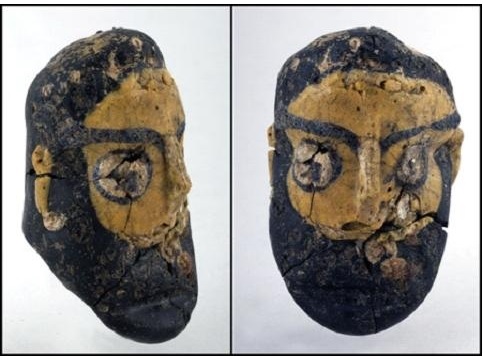Over the past few years a large amount of new archaeological material has been found in Bulgaria which sheds new light on Celtic settlement in this region. This includes a variety of metal, glass, and ceramic artifacts from sites across the country which, according to Prof. L. Vagalinski (Vice Director of the Bulgarian National Archaeological Institute and Museum), once again raises serious questions about the Celtic presence in today’s Bulgaria (Vagalinski 2002, 2007).
HELIS
The Roman historian Justinius (Pomp. Trog) xx v 1-3) informs us that in the wake of the main Celtic invasion led by Brennos a second wave of Celts arrived on the territory of today’s Bulgaria. Consisting of 15,000 infantry and 3,000 horse, this army, according to Justinius, destroyed the forces of the Thracian Getae and Triballi tribes.
The capital of the aforementioned Getae tribe in the 4th / 3rd c. BC was situated at Helis (now part of Sboryanovo archaeological reserve) in northeastern Bulgaria, famous for the spectacular Thracian tombs discovered in the area (Fig. 1). Recently published Celtic material from this site includes ceramic vessels (Fig. 2) which were found in a pit by the fortification wall. A Sinope amphora stamp from 273 BC lay at the bottom of the pit which was covered by ruins of the curtain wall which collapsed in the earthquake in circa 250 B.C. The Celtic ceramic can therefore be dated to the second quarter of the 3rd c. B.C. (Vagalinski 2007: P74; cat. # 18-19) Further Celtic finds from the site such as a bronze La Téne B2/C Hohlbucklering discovered in 1987 and a further example 11 years later (Megaw 2004, 98) (Fig. 3), bracelets, glass ‘Eye Beads’ (Fig. 4 – see also ‘Little Glass Men’ article) as well as evidence of on-site production of La Têne double-spring brooches (Megaw 2004: 103 and fig. 9, 7 – 11,13) provide further archaeological evidence of Celtic presence in this area.

Fig 1 Interior of one of the 4th/ 3rd c. BC tombs at Helis (Sboryanovo archaeological reserve)


Fig. 2 Celtic Pottery from Helis (After Vagalinski 2007)

Fig. 3 Bronze Celtic Hohlbucklering from Helis (after Megaw 2004)

Fig. 4 Celtic ‘Eye Beads’ from the tomb in tumulus 18 at Helis (After Gergova, Katevski
2008)
What is not present at Helis, however, nor any other Thracian settlement in Bulgaria during this period, is evidence of destruction which would indicate conflict between the local Thracian population and the newly arrived Celts. Indeed, archaeological evidence from Helis and throughout Eastern Bulgaria indicates a period of economic prosperity after the Celtic arrival in the area. At present archaeological data would appear to contradict the dramatic version described by Justinius. Instead it appears to show a more gradual and largely peaceful Celtic migration into the area. (Lazarov 2010)
ARKOVNA/ DALGOPOL

The situation at the Arkovna hillfort near Dalgopol (Varna region) is even more clear. Due to the commendable and objective work of the Bulgarian archaeologists L. Lazarov and Dr. M. Manov, Celtic settlement in the Dalgopol area, and in particular at the Celtic hillfort at Arkovna, is the best documented in the region. (See Manov 2010, Lazarov 2010 with cited lit.) The wealth of Celtic material published from this area over the decades has recently been augmented by further numismatic and archaeological evidence. This includes Celtic coinage of the Cavaros type (Fig. 6), La Têne fibulae, finger rings, belt elements, golden ornaments with filigree, parts of helmets, chain-mail, glass bracelets, ‘Eye Beads’, knives, and Celtic ceramic. (Fig. 7 – 10) The Arkovna site was certainly the centre (or at least one of the centers) of the Celtic ‘Tyle’ state which controlled most of today’s eastern Bulgaria in the 3rd c. BC.
To the west this Celtic kingdom certainly controlled the region of Veliko Tarnovo as far as the Jantra river; the southern border was somewhere to the south of Kabyle and near Appolonia on the Black Sea coast; in the north it reached to the Danube and had contact with Celtic groups north of the river. This state undoubtedly had a significant Thracian content, with the Celtic cultural and military element remaining dominant. (Lazarov 2010)

Fig. 5 Arkovna hill – Centre of the Celtic ‘Tyle’ state in eastern Bulgaria

Fig. 6 Bronze coins of the Celtic king Cavaros (220’s – 210’s BC) from Arkovna/ Dalgopol and surrounding region. (After Lazarov 2010)

Fig. 7 Celtic fibulae and bracelets from Arkovna/ Dalgopol and surrounding area (After
Lazarov 2010)

Fig. 8 Celtic finger rings, belt elements and golden ornaments with filigree from Dalgopol and surrounding area (After Lazarov 2010)
 Fig. 9 Celtic weapons and armour (helmet cheek guard, chain-mail and knife) from Dalgopol (After Lazarov 2010)
Fig. 9 Celtic weapons and armour (helmet cheek guard, chain-mail and knife) from Dalgopol (After Lazarov 2010)

Fig. 10 – Celtic ceramic, glass ‘eye beads’ and glass bracelets from the Celtic hillfort at Arkovna (After Lazarov 2010)
BIZONE / KAVARNA

Further recent finds of Celtic material again come from northeastern Bulgaria – from the Black Sea colony of Bizone (modern Kavarna, Dobruja region). Celtic ceramic from the Bizone / Kavarna site includes jugs, pots and other table pottery with the same technical characteristics – brown to grey-black clay with significant sand inclusions, rough external surface, and burnished decoration. (Fig. 11)

Fig. 11 Celtic ceramic from Bizone/ Kavarna (After Vagalinski 2007)
The Kavarna ceramic has a number of parallels in Celtic complexes along the Serbian part of the Danube and has been dated to the 1st c. BC / 1st c. AD. Other Celtic material found at the site as well as substantial Celtic numismatic material found in the Kavarna area dating from the 3rd – 1st c. BC confirm Celtic settlement in this area in the pre-Roman and Roman period. (See numismatics section and ‘Little Glass Men’ article)
NORTH-WESTERN BULGARIA

Other finds of La Têne pottery from the early Roman period are concentrated in the northwestern part of Bulgaria – in the Vidin and Montana regions – an area traditionally associated with the Scordisci tirbes. The finds include bowls, jugs, pots and dolia (fig. 12 )
Examples have so far been published from three Celtic settlements:
- Under the Roman fortification Castra Martis (today’s Kula, Vidin region)
- Near the village of Jakimovo (Montana region)
- Near the village of Valchedrum (Montana region)
It is interesting to note that both Jakimovo and Valchedrum lie on the small Tsibiritza river, the same river on which the village of Gorni Tsibir, where the gold Celtic torc dating from the 4th c. BC was found, is situated. (See ‘The Danube Torc’ article) All of the recently published Celtic ceramic from this area has been dated to the 1st c. BC / 1st c. AD. (Vagalinski 2007)

Fig. 12 Celtic ceramic from Valchedrum, Jakimovo (After Vagalinski 2007)
NORTH-CENTRAL BULGARIA

The Celtic pottery recently found in north-central Bulgaria comes from a location 2 km. northeast of the village of Krivina, Russe region. The site lies 1 km. south of the Danube. A large vessel found is of late La Têne slip decorated pottery which was popular among Celtic tribes from Normandy and southwest Germany to the west, up to Serbia in the east and particularly in the Danube region. It was used primarily by Celtic aristocracy and is often found, as in the case of the Krivina find, together with late La Têne burnished ceramics. Any question that this was imported into Thrace is ruled out by the fact that the Krivina ceramic was found together with the kiln in which it was produced. Тhe kiln itself was unusually large (max diameter 2.30 – 2.40 m.). Together with the luxury Celtic ceramic was found hand-made ‘Thracian’ vessels which indicates influence of the coexistence of Celts and Thracians in this part of Bulgaria. The same phenomenon is to be observed along the Serbian part of the Danube. (Vagalinski op cit)
The Krivina kiln, a two-part kiln with two fireplaces and a diametrical grate, is of a typical Celtic type. The use of slip dates the Bulgarian pottery because this technique first appeared among the Balkan Celts at the end of the 1st c. BC under Roman influence. This Celtic pottery is thus dated to the end of the 1st c. BC / beginning of the 1st c. AD. (Loc cit)

Fig. 13 Celtic ceramic from Krivina (After Vagalinski 2007)
The above data clearly shows Celtic ceramic production on the territory of today’s Bulgaria from the 3rd c. BC until the Roman period. The same is the case with production of Celtic metal objects (see Part 2 of this study). In spite of this, and all the other numismatic and archaeological evidence, some Bulgarian academics continue to insist that there was never a Celtic political or ethnic presence on the territory of today’s Bulgaria. Such claims, in the face of аll the scientific evidence to the contrary, cast serious doubt on the objectivity of those concerned. In conclusion, one can only echo the sentiments of Prof. Vagalinski (2002, 2007) who has repeatedly called for a thorough and, above all, impartial evaluation of this ever increasing body of evidence.
Literature
Gergova, Katevski 2008 = Gergova D. Katevski I. Archaeology and Geophysics in the Sboryanovo National Reserve (North-East Bulgaria). In: Geoarchaeology and Archaeomineralogy (Eds. R. I. Kostov, B. Gaydarska, M. Gurova). Proceedings of the International Conference, 29-30 October 2008, 374-379.
Lazarov 2010 = Lazarov L. The Celtic Tylite State in the time of Cavaros. In: In Search of Celtic Tylis in Thrace (III c. B.C.). Proceedings of the Interdisciplinary Colloquium arranged by the Archaeological Institute and Museum at Sofia and the Welsh Department, Aberystwyth University held at the National Archaeological Institute and Museum. Sofia 2010. P. 97 – 114.
Megaw 2004 = Megaw J.V.S. In the Footsteps of Brennos? Further Archaeological Evidence for Celts in the Balkans. In: Hӓnsel B., Studenikova E. (eds.) Zwischen Karpaten und Ӓgӓis. Neolithikim und ӓltere Bronzezeit. Gedenkschrift für Viera Nemejcova–Pavukova. Rahden/Westf. 93 – 107.
Vaglinski 2002 = Vaglinski L. F., Burnished Pottery from the first century to the beginning of the seventh century AD from the region of the lower Danube (Bulgaria) Sofia 2002.
Vagalinski 2007 = Vagalinski L. F., Celtic Pottery in Northern Bulgaria. In: The Lower Danube in Antiquity (VI c. B.C. – VI c. A.D.). International Archaeological Conference. Bulgaria – Tutrakan, 6-7.10.2005. p. 72-83. Sofia 2007.




